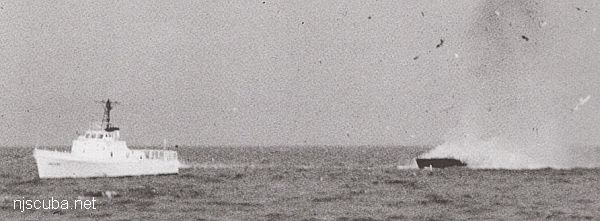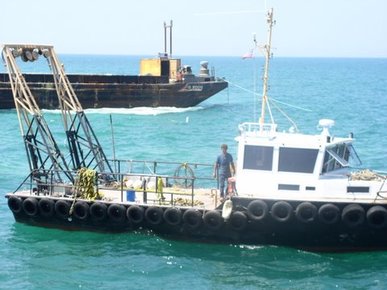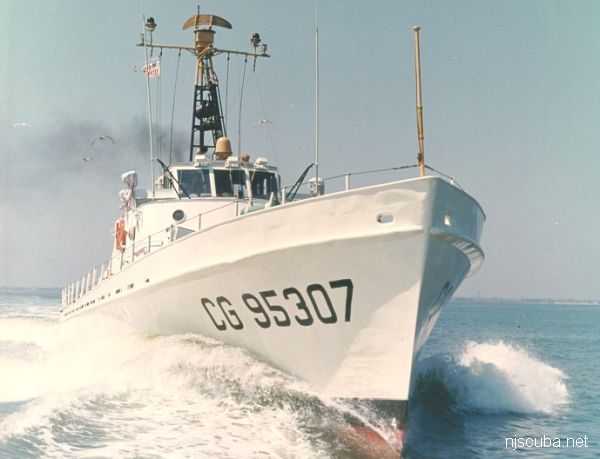Johnny Buoy BUSL

- Type:
- artificial reef, buoy tender
- Built:
- 1969
- Specs:
- ( 46' x 16' )
- Sponsor:
- USCG, New Jersey State Police
- Sunk:
- Thursday September 9, 1993 - Cape May Artificial Reef
- GPS:
- 38°51.106' -74°42.170'
The Coast Guard classification for this type was BUSL, for 'boat utility stern loading'. These boats had facilities to maintain the crew for 48 hours. They were powered by a diesel engine driving a steerable propeller, which would have made them extremely maneuverable. They were replaced by a 49-foot model.
There do not seem to be any photos of this class of vessel. I was able to find these specifications:
46' BUSL
LOA: 46'4"
BEAM: 16'2"
DISPLACEMENT: 33,000 lbs
PROPULSION:
1 - Diesel, GM 6V-71, 180 SHP, single Schottel Rudder-propeller unit, Model SPR-100. Unit is PTO driven with no reverse gear, 360 degree steering is possible. Single 3 blade propeller, diameter 33", pitch 29"
LIFT CAPACITY:
4,000 lb. using both whips; Single whip 2,000 lb.
HOOK HEIGHT AT DECK EDGE: 11'6"
CARGO CAPACITY: Deck Load, 16,000 Lb
TRANSIT SPEED: 9.5 Knot Maximum Speed
TRANSIT ENVIRONMENT:
Protected cabin; max sea state not published, should not exceed ratings for 41' UTB.
SERVICE ENVIRONMENT:
Max 1-2 ft. for safe working.
ENDURANCE:
Range 130 nautical miles at maximum speed. Endurance is limited by fuel capacity. Boat is capable of supporting the crew for 48 hours.
GENERAL DESCRIPTION:
The boat is steel construction, of a V-bottom type fitted with a rudder-propeller unit coupled to a single diesel engine. The 46 BUSL has a fiberglass surfaced plywood cabin forward, and a buoy notch at the transom. A hydraulically operated A-frame is located aft on the main deck and used for ATON work. Galley and dinette are located in the forward part of the hull, bunks and lockers are provided for four crew members along with a shower, lavatory, and portable toilet. Air conditioning and electric heating are provided in the pilothouse and hull crew quarters.
SPECIAL CAPABILITIES:
Fuel Oil Capacity: 180 gal.
Fresh Water Capacity: 80 gal.
Sanitary Water Capacity: None, self-contained portable toilet.
SPECIAL LIMITATIONS:
Limited berthing areas and crew support capability, no mixed-gender provisions.
NUMBER OF CLASSES: Two (A and B)
NUMBER OF EACH CLASS: A = 6, B = 9
CLASS DIFFERENCES:
B class vessels are equipped with 400 gallon capacity, and increased range to 250 nautical miles. The boats are similar and are all capable of performing the same mission
"Johnny Buoy" was one of three boats built in 1969: BUSL 46307-46309. The boat was blown to smithereens during sinking, as is apparent in the photo at the top.






Questions or Inquiries?
Just want to say Hello? Sign the .